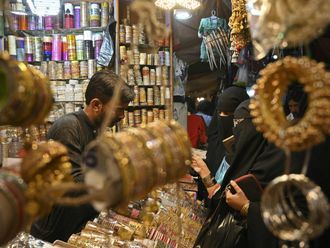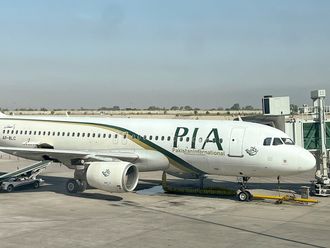ISLAMABAD: Every year in autumn, hundreds of migratory birds arrive in Islamabad to settle in the water bodies there — lakes, ponds, steams and dams.
They come from places as far as Africa and Siberia and in their search for warmer climes zone in on Margalla Hills National Park (MHNP) a natural habitat spread over 67 sq miles (108 sq km) that is just the perfect place away from the harsh winter back home.
The arrival season for these migratory birds hits a peak during autumn days (start of October) and their departure time is late spring (by end of February).
These seasonal guests spend their six-month winter vacation at lakes, in the meadows and over the hills surrounding federal capital.
Out of world’s 670 species of migratory birds around the world, around 180 opt for Pakistani straits along the seas, its forests, hills and meadows.
However, the number of the migratory birds choosing Islamabad’s green lands has dramatically come down in the last few years.
Safwan Shahab Ahmad, vice-chairman of Pakistan Wildlife Foundation (PWF) and a well-known ornithologist told Gulf News, that the migratory birds not only add colour and diversity to Islamabad’s fauna and flora, but also keep the cycle of biodiversity alive and humming.
Pakistan, he said is among the top ten countries where migratory birds are facing a threat.
There are several factors behind lesser numbers of birds flying into Pakistan’s MHNP, including large-scale urbanisation, private colonies, felling of trees, development and expansion of roads, water contamination and introduction of exotic plant species, said Safwan.
Another threat to these migratory birds’ safe passage is hunting, he said, adding that hunters have even formed special clubs, such as Pigeons Hunting Club, Flamingoes Club and Ducks Club where members proudly share pictures of their ‘trophies’ on social media.
Speaking about the route taken by migratory birds, he said they use the Indus Flyzone which is one of the 13 most-travelled routes by migratory birds.
According to him, crops owe their survival to these migratory birds as they eat insects that are a threat to crops, while their droppings act like natural fertilisers.
In Islamabad, Rawal Lake, Margalla Hills National Park, Simly Dam and Rawal Dam are frequented by migratory birds in winter, he said.
Most birds, he said, either perish because of excessive use of pesticides, while others fall prey to hunters’ nets and power pylons. The remaining few are forced to other fly to other destinations after finding the ponds and lakes dry.
Safwan said after the 18th amendment, protection of migratory birds has become a provincial subject and provincial governments are required to take stringent measures in order to stop their hunting.
There are two routes for these migratory birds — one is the Central Asian route or Indus Flyzone that also includes Siberia and birds reach Islamabad and other parts of Pakistan after covering thousands of miles in order to escape the harsh winters in those countries.
The other is the African continental route where birds come from far-off places such as Somalia, Kenya and South Africa to reach Pakistan.
Some birds, he said even fly day-and-night in search of warmer lands.
If efforts are not made to restore their course, the day is not far when they stop coming here, he said.
Explainer
These days in Islamabad while having a morning or evening walk in a park or along the road or while hiking in the hills, one can spot rare species of flamingos, pigeons, ducks, pelicans and others from the family of migratory birds resting at a lake or sitting in a groove.
Margalla Hills National Park and Islamabad’s hundreds of big and small parks most famous Fatima Jinnah Park are the favourite points where these migratory birds land and stay during the winter season, almost six months












